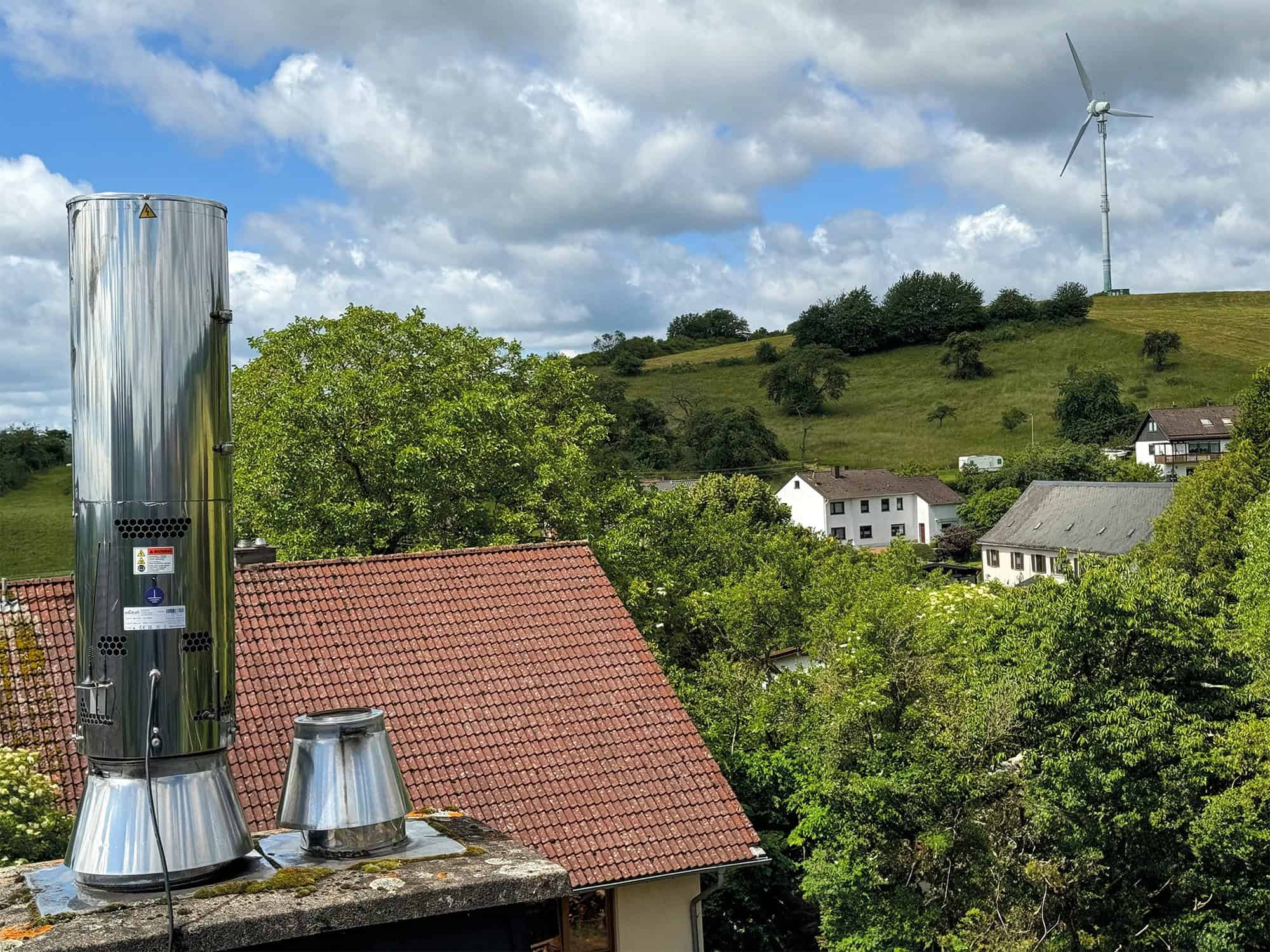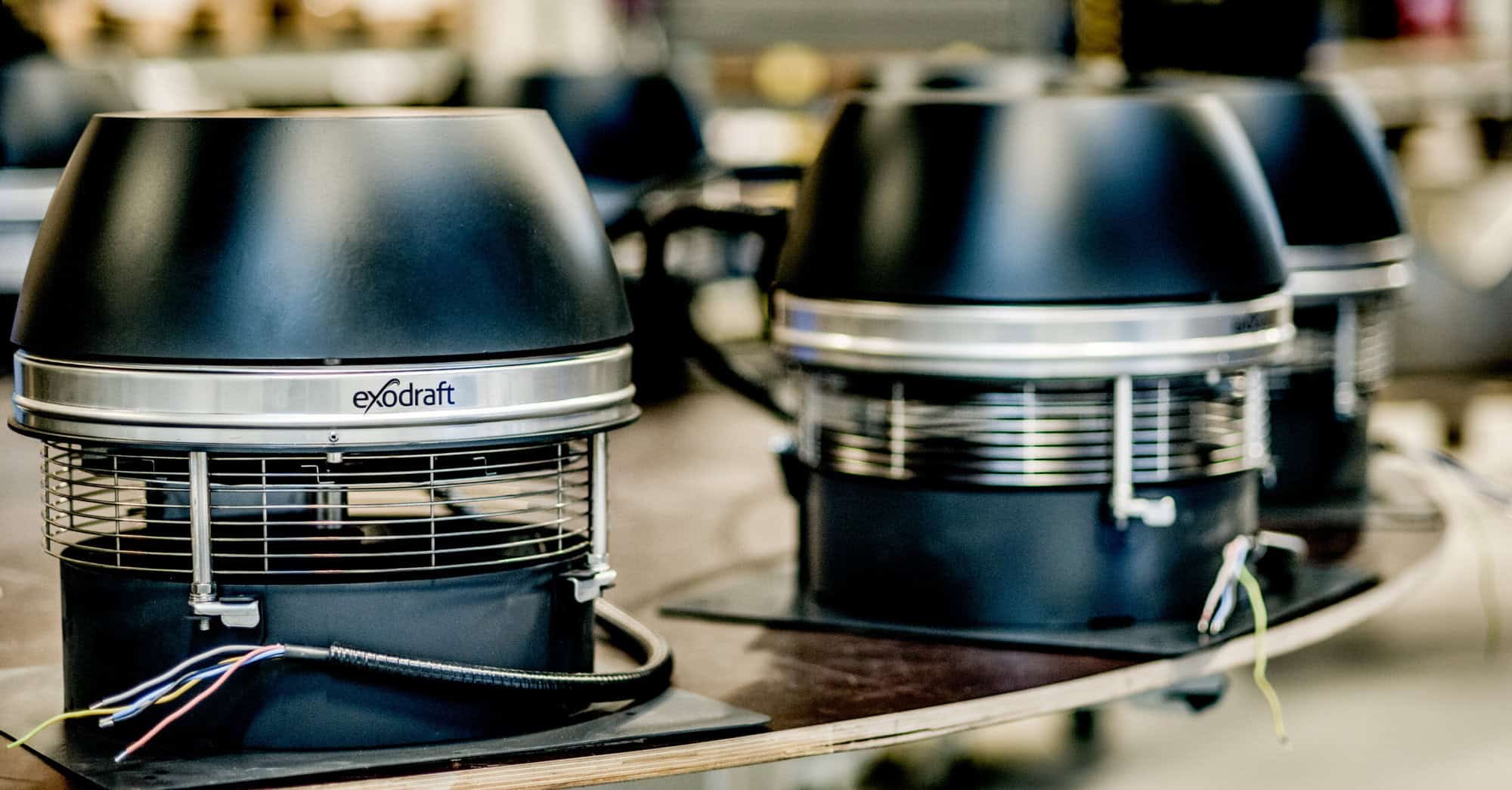Article
13. maj 2025 · 6 min
Can a Wood Stove Burn All Night?
Want your wood stove to burn all night? Learn how the right fuel, airflow, and a chimney fan can keep your fire going and your home warm until morning.
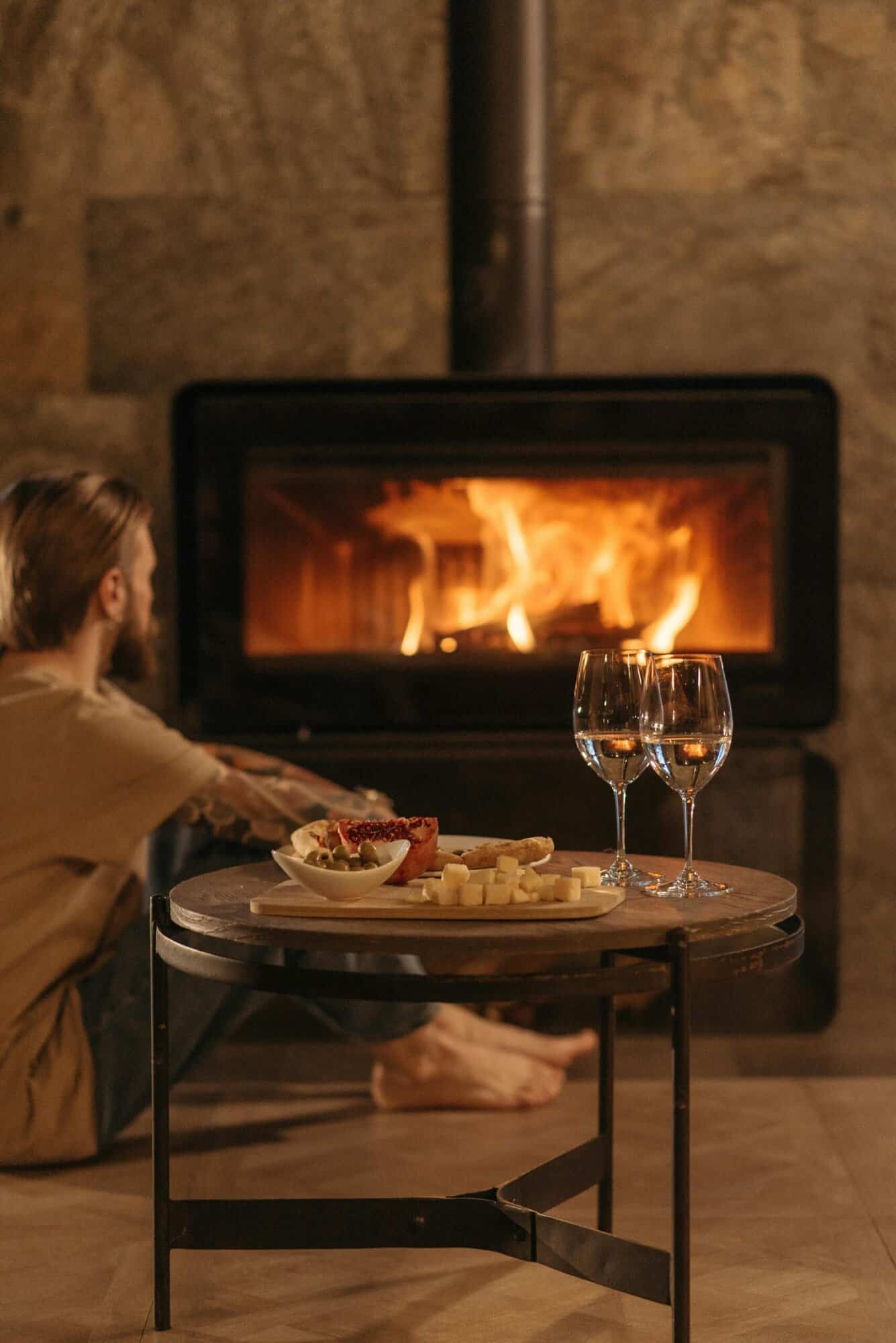
Many wood stove owners wonder whether it’s possible to keep their stove burning overnight without having to restart the fire in the morning. The idea of waking up to a warm home and glowing embers ready for a fresh log sounds appealing, but burning wood for extended periods requires the right approach.
Without proper preparation, overnight burning can lead to heat loss, excessive smoke, or even a smouldering fire that struggles to stay lit. The key to success lies in choosing the right fuel, managing airflow, and ensuring a stable chimney draft.
In this guide, we’ll explore why it can be difficult to keep a wood stove burning overnight and provide practical solutions to help you maintain a steady, efficient fire while avoiding common problems
What Happens When You Try to Keep a Wood Stove Burning Overnight?
Keeping a wood stove burning overnight may seem simple—just load it up with logs before bed and let it smoulder. However, several challenges can arise that make it difficult to maintain a consistent fire throughout the night.
Heat Loss and Smouldering Fires
One of the biggest issues with overnight burning is incomplete combustion. If the fire doesn’t have enough oxygen, it can start to smoulder instead of producing clean, efficient heat. A smouldering fire releases more smoke and creosote, which can lead to chimney buildup and potential blockages over time.
Uncontrolled Smoke and Poor Air Quality
If the stove is closed down too much to “save the fire,” it can reduce airflow and cause excessive smoke. This can lead to rising emissions inside your home and a higher risk of carbon monoxide buildup if ventilation is poor.
Inconsistent Chimney Draft
A weak chimney draft can make it harder to keep the fire going overnight. If the draft is too low, smoke and gases won’t exit the chimney properly, which can cause the fire to burn unevenly or go out completely. Cold outdoor temperatures can also reduce natural draft, making it even harder to sustain an overnight fire.
For a wood stove to burn effectively all night, the key is to balance fuel, airflow, and chimney performance—which we’ll cover in the next section.
Why Is It Difficult to Keep a Wood Stove Burning Through the Night?
Keeping a wood stove burning all night requires the right combination of fuel, airflow, and chimney draft. If any of these factors are unbalanced, the fire may burn out too quickly or produce excessive smoke.
The Role of Wood Type and Moisture Content
Not all wood burns the same way. To maintain a slow, consistent burn, it’s essential to use high-density hardwoods such as:
- Oak – Burns slowly and produces long-lasting embers.
- Ash – Provides steady heat with minimal smoke.
- Beech – Good for sustained combustion with high heat output.
Avoid softwoods (like pine and fir) for overnight burning, as they burn too quickly and create more creosote buildup. Additionally, using properly seasoned wood with a moisture content below 20% is crucial for efficient combustion. Wet wood produces excess smoke and burns inefficiently, making it difficult to sustain a fire overnight.
How Chimney Draft Affects Overnight Burning
Chimney draft plays a crucial role in maintaining a steady fire. If the draft is too weak, smoke and gases can accumulate inside the stove, causing the fire to smoulder. If the draft is too strong, the fire may burn too quickly and burn out before morning.
Factors that impact chimney draft include:
- Outdoor temperature – Cold air can reduce natural draft, making it harder for smoke to exit.
- Chimney height and design – A short or improperly designed chimney may struggle to maintain airflow.
- Creosote buildup – A dirty chimney can obstruct airflow and cause poor combustion.
A stable, controlled draft is essential for keeping the fire burning evenly throughout the night. If natural draft is inconsistent, a chimney fan can be a game-changer, ensuring a steady airflow for optimal combustion.
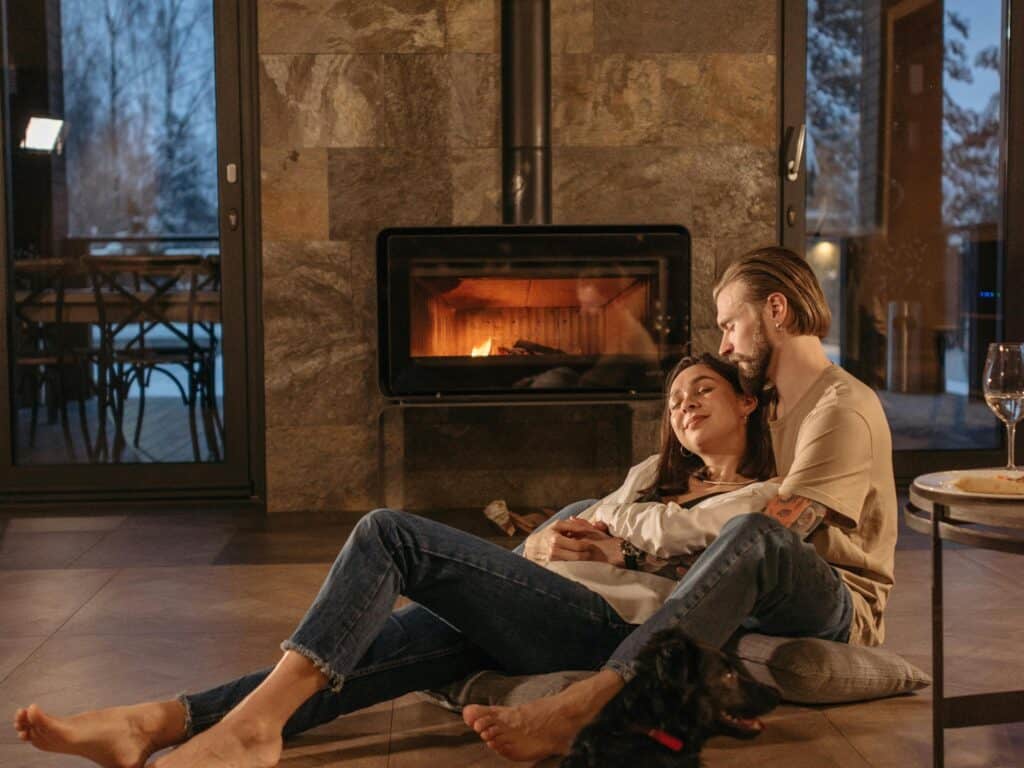
How to Keep a Wood Stove Burning Longer Overnight
To successfully keep a wood stove burning all night, you need to optimise fuel selection, airflow, and chimney draft. Here are the most effective techniques to extend burn time and ensure a steady, efficient fire.
Choose the Right Fuel for Slow-Burning Embers
The type of wood you use greatly affects how long your stove burns overnight. For a long-lasting fire, use:
- Dense hardwoods like oak, ash, and beech – These burn slowly and produce long-lasting embers.
- Large logs – Thicker logs take longer to burn compared to small kindling or softwoods.
- Properly seasoned wood – Keep moisture content below 20% to avoid excess smoke and inefficiency.
Before bed, arrange larger logs at the bottom with smaller pieces on top to create a slow-burning core that lasts through the night.
Adjust Air Vents for Controlled Combustion
A common mistake is closing the air vents too much, which can cause the fire to smoulder rather than burn efficiently. Instead, try:
- Partially closing the air vents – Reduce airflow slightly, but keep enough oxygen flow to maintain combustion.
- Avoiding full shutdown – Completely closing the vents can cause excessive smoke and creosote buildup.
- Monitoring heat output – Adjust the vents depending on how the fire is burning.
The goal is to maintain a slow but steady burn rather than suffocating the fire.
Ensure Stable Chimney Draft with a Chimney Fan
One of the biggest challenges of keeping a fire burning overnight is inconsistent chimney draft. Without proper airflow, the fire can go out too quickly or burn inefficiently. A chimney fan helps by:
- Creating a consistent draft, regardless of outdoor conditions.
- Preventing smoke buildup, reducing the risk of smouldering fires.
- Ensuring optimal combustion, allowing for better heat retention overnight.
A chimney fan actively controls airflow, making it easier to maintain a slow-burning, efficient fire without excessive smoke or heat loss.
By combining the right fuel, controlled airflow, and stable draft, homeowners can keep their wood stove burning overnight without constant monitoring.ucing overall heating costs and making a wood-burning stove even more economical.
How to Achieve Steady, Efficient Overnight Heating
Keeping a wood stove burning overnight requires the right balance of fuel, airflow, and chimney draft. While many homeowners struggle with heat loss, smouldering fires, or excessive smoke, these challenges can be overcome with a few simple adjustments as we already went through.
With the right setup, a wood stove can burn efficiently throughout the night, reducing the need for frequent rekindling and keeping your home warm until morning. By implementing these solutions, homeowners can enjoy the convenience of overnight heating while maintaining an efficient and smoke-free burn.
Find out more about your options
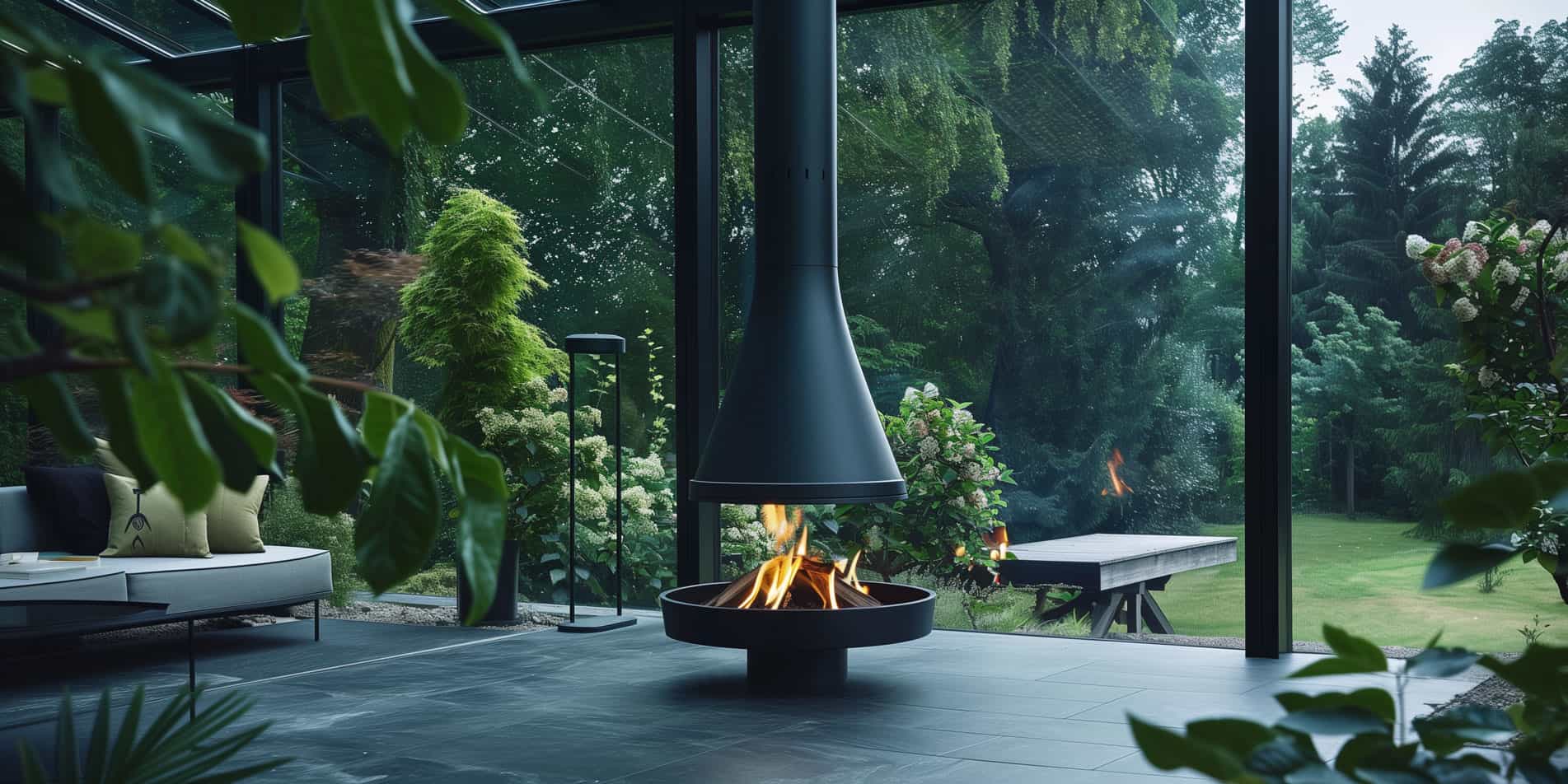
exodraft

